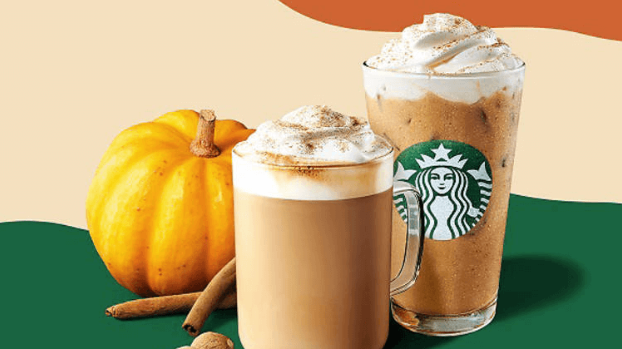
Before the heat waves of August break, Starbucks locations receive their first shipments of pumpkin spice. The hysteria of pumpkin spice season is felt by Starbucks partners before the first leaves fall. Customers order hundreds of pumpkin spice lattes a day, workers notice an increase in labor and a decrease in staffing. For employees, pumpkin spice season comes with a wave of anxiety that customers don’t see.
Mike is a New Jersey barista who preferred his last name be unreported. He began his interview with one word describing pumpkin spice season: “Terrible.”
The fall season comes with an influx of sales. Many partners have become used to working the busy floor with almost half the staffing as usual. With fall at Starbucks being as popular as it is, this is close to impossible.
“I think that pumpkin spice season comes at the worst time,” he stated. “What tends to happen is there tends to be a lot of college kids that go back to school. Since pumpkin spice literally happens around the time that everybody leaves — we launched Aug. 30 — it’s really hard, especially at the beginning, to keep up with the demand and overall more customers.”
The demand also tends to affect how customers treat baristas. There is often little empathy and understanding coming from customers during this season. Customers expect their pumpkin products right here, right now. The hype surrounding pumpkin spice season can distort the reality that is behind the bar, and baristas are being held to a high standard that they cannot achieve. Customers’ inconsideration and rudeness makes employees’ jobs even harder.
“No hello, no thank you, just this stick-your-card-in-the-reader and that’s it,” Mike remarked.
Partners also find it difficult to take care of themselves this season. Many workers don’t want their coworkers to have a more difficult shift without them on the floor. As a result, they often force themselves to work when they are sick or injured to try to compensate for the lack of labor. This can take a toll on their physical and mental health, and customers don’t realize that the baristas in front of them are struggling.
Mike is an example of this. He recently dealt with an injury, but he still went into work everyday.
“I wasn’t able to take off the necessary time due to understaffing issues,” he said. “One person down is more of a big deal now, versus a couple months ago when we were fairly staffed.”
In some districts, certain stores are operating under reduced hours due to understaffing. Constance is a New Jersey shift supervisor who asked that their last name be unreported. Their store has recently begun closing early. Before this action was taken, pumpkin spice season pushed partners far beyond their limits.
“It was always really stressful, especially for anybody working an evening or night shift because that was where we were lacking the most in terms of labor,” Constance said about their store’s experience before reduced hours. “As soon as one person called out at any point in the day, it really just threw off the cadence for the whole day and we would have to make adjustments like either closing the store early, or turning mobile orders off, or otherwise trying to limit the demand.”
Once hours were reduced, Constance reported that customer interactions became more positive and store morale was lifted. For everyone, work became easier and much less stressful. The issue of understaffing felt accommodated for, even though staffing is still slim. Employees working in stores with reduced hours know that they are lucky, and they can only hope that they’ll have sufficient staffing once they work full hours again.
Some stores are totally unaffected by issues of staffing and rudeness. However, baristas from those stores may be asked to cover shifts in neighboring stores that are having more issues in these areas. Even if their home store is surviving, they may have to work in stores where morale is low and stress is high.
Alice Sebastiao is a shift supervisor from Long Island who has been having a positive experience in her home store this fall. She often picks up shifts in other locations, and her experiences in her home store versus other stores are like day and night.
“My store has a very slow business compared to other stores nearby, so [pumpkin spice season] doesn’t affect me that much,” Sebastiao said. But, I have worked at other stores where you can definitely tell that people are desperate and drowning.”
Starbucks workers pride themselves on delivering an experience that makes each store feel like more than just a coffee shop, but rather a “third place” between home and work. But all of the stress and exhaustion that pumpkin spice season creates is making it harder and harder for them to deliver this experience. In a season full of festivities, they find little energy or reason to celebrate.
Above all, Sebastiao said that, if there’s one thing she wants both customers and partners to know, it is that they are allowed to put themselves first this fall.
“Season changes affect everyone,” she stated. “Everyone gets sick throughout the season so everyone gets sluggish. And also just with moods in general, with it being colder and a lot darker more often. People are not as willing to be as happy as they would be with sunshine all the time.”
Although partners work in a culture of selflessness and customers live rushing from one place to another, consideration and understanding on everyone’s part will make this season go by easier for both employees and patrons alike.
